Bruce Lee

Martial Artist • Actor
Birth Date: November 27, 1940
Death Date: July 20, 1973 — 32 years old
Birth Place: San Francisco, California
Children: Brandon Lee
The dominant figure in martial arts related entertainment in modern culture, and one of the most enduring pop icons of the twentieth century, Bruce Lee was an actor, director, and instructor whose films and philosophy popularized martial arts in both Western and Eastern cultures in the late 1960s and into the early 1970s. Though as a mature performer he made only a handful of films between 1971 and 1973, his graceful yet lethal screen presence was so magnetic - and such a source of pride for Asian audiences - that his influence continued to shine decades after his sudden and mysterious death in 1973.
Born Lee Jun Fan to actor Lee Hoi-Chuen and Grace Lee on Nov. 27, 1940 in San Francisco, CA, his Anglicized name was courtesy of the supervising doctor, Mary Glover. Lee's father was a noted singer with the Cantonese Opera in both his native Hong Kong and the United States, so it was not surprising that the young boy would make his acting debut at just three months in a stage production with his father. At age three, Lee's family relocated to Kowloon in Hong Kong, and three years later, he began landing juvenile roles in local film productions. Impressed with his scrappy screen persona, Lee soon graduated to supporting and lead roles, often under the name "Lee Siu Lung" or "Little Dragon."
His fame may have contributed to some friction he experienced at the age of 12, when he was badly beaten by a local street gang. Determined to never again lose a fight, he trained in Wu style Tai Chi Chuan under his father, later studying the Wing Chun style of kung fu with legendary instructor, Yip Man. Lee also trained in Western boxing and fencing, courtesy of his brother Peter, who was a champion in the sport. In fact, all of these elements would later contribute to Jeet Kun Do, Lee's own style of martial arts which would go on to be widely copied and admired.
A champion boxer and dancer by the age of 18, Lee also developed an explosive temper that frequently ran him afoul of Hong Kong authorities. Concerned for his son's safety, Lee's father sent him back to San Francisco, where he lived with and worked for relatives before relocating to Seattle, WA. There, he received his high school diploma and later attended the University of Washington, where he studied drama and philosophy. Lee also met Linda Emery, a pre-med student who became one of his students when he opened his first martial arts school in the early 1960s. By 1963, the pair was married, and produced two children: son Brandon in 1965 and daughter Shannon in 1969.
For the next few years, Lee devoted himself to researching martial arts as well as developing a rigorous physical fitness regime which drew from elements of Western weight lifting, boxing and other training methods - with a good mix of nutrition and spirituality lumped in. Along with his previous studies, these coalesced into a school of combat philosophy which he called Jeet Kune Do, a.k.a. The Way of the Intercepting Fist. The style emphasized practicality, speed and efficiency over raw power, and by 1964, Lee was operating schools in Seattle and Oakland, CA to spread his new dogma.
Lee soon became involved with American martial arts instructor and promoter Ed Parker, and through him, met many of the top Western competitors, including Chuck Norris, Bob Wall, and Mike Stone. Parker invited Lee to compete at his 1964 Long Beach International Karate Championship, where Lee astounded audience members with two-finger push-ups and demonstrated the "one inch punch," in which a closed fist held just inches from an opponent's chest could deliver a devastating blow. Parker filmed Lee's exhibitions and showed them to his students, including hairdresser Jay Sebring, who brought Lee to the attention of producer William Dozier of "Batman" (ABC, 1966-68) fame. Dozier was looking for an actor to fill the role of Kato, bodyguard to the venerable crime fighter "The Green Hornet," in a TV series based on the radio serial (ABC, 1966-1967). Dozier invited Lee to audition for the role and, not surprisingly, he landed it on the strength of his martial arts skills, which were the series' sole highlight - to say nothing of his handsome, screen-worthy looks. Though the show lasted a single season, it helped to elevate Lee's status among the film and television community, and after opening a school in Los Angeles, he began counting such stars as Steve McQueen and James Coburn among his students and friends.
In turn, they helped land Lee work in the film industry, including technical advisor on the Dean Martin spy caper "The Wrecking Crew" (1969) and several TV episodes. He earned his first substantial movie role courtesy one of his students, screenwriter Stirling Silliphant, who recommended him for the small role of an enforcer in "Marlowe" (1969). Lee gave a show-stopping demonstration of kung fu in his scene, which required him to demolish the office of private investigator Philip Marlowe (James Garner); the set piece concluded with a jaw-dropping high kick which shattered a lamp hanging from Marlowe's ceiling. Silliphant also penned two episodes of "Longstreet" (ABC, 1971-72) for Lee, who guest-starred four times on the crime series as the martial arts instructor to James Franciscus' blind insurance investigator. While Lee's television appearances did little to improve his standing in the United States, the arrival of "The Green Hornet" on Chinese televisions made Lee a star. When he returned to Hong Kong to promote the series, he was deluged with offers by local film producers to star in an upcoming project. Lee eventually accepted an offer from Raymond Chow of Golden Harvest Productions, and began work on a low budget feature entitled "The Big Boss" (1971), which was filmed in Thailand."
The Big Boss" was the spark that ignited the worldwide flames of adoration for Bruce Lee. At its core a simple story about a violence-prone young man who, like Lee, is sent away from his home to keep his temper in check, only to find it his best weapon against a horde of vicious drug smugglers, "The Big Boss" introduced Lee as an altogether new type of martial arts star. Unlike many of his screen predecessors, Lee was humble yet confident of his abilities, but that cool exterior masked a slow-boiling anger that exploded in an animalistic rage - complete with his trademark screeching cry - in the heat of battle. In fight scenes, Lee was exceptionally graceful - even sensual; his movements closer to dance or gymnastics than the stiff hand-to-hand combat seen in earlier kung fu efforts. And he appeared to be unstoppable, whether facing one villain or, as in one of the best set pieces in "The Big Boss," a room full of armed thugs. On screen, Lee was simply riveting to watch, and Asian audiences flocked to see him, turning a massive profit for all involved at Golden Harvest. Not surprisingly, a second film, "Fist of Fury" (1972), was immediately put into production. A period piece which pit martial arts student Lee against the members of a vicious Japanese school, Lee's talents were given an even greater showcase, as he dispatches the Japanese students (as well as a Russian villain, played by Lee's student, Bob Baker) before taking on the head of the school. Lee's hero status was cemented by numerous scenes invoking Chinese pride, most notably a flying kick delivered to a sign preventing dogs and Chinese from entering a building.
Flush with two hit films under his belt, Lee began to take control of his career with his next picture, "Way of the Dragon" (1973). Lee struck a deal with Chow and Golden Harvest that gave him the final word in every aspect of the film - he would not only star in but write and direct the picture, as well as produce it through his own company, Concord Productions. Filmed in Italy, "Way" featured spectacular fight choreography by Lee, who took on champs Bob Wall and Wang Ing Sik before bringing the house down with a final bout against Chuck Norris in the Colosseum. Though "Way" was a great success for all involved, it would be the last time Lee would ever exert such a degree of control over his own films.
After three massive box office hits in the Asian market, Hollywood began to view Bruce Lee with renewed interest. Martial arts films were proving profitable for independent distributors, as proven by the runaway ticket sales generated by "King Boxer," a 1972 Hong Kong actioner released in the U.S. as "Five Fingers of Death." Based on these successes, many studios began to purchase their own titles for release to inner city theaters. But few producers were willing to back an American-made kung fu film - that is, until producer Fred Weintraub traveled to Hong Kong and saw Lee's films. Convinced that he could create a huge hit in the States with a film starring Lee, he struck a deal between Lee's Concord Pictures and Warner Bros. to co-produce an English-language martial arts film shot entirely in Hong Kong and featuring Lee as its star, co-scripter, and martial arts choreographer. Despite their enthusiasm for Lee's participation, Warner Bros. remained skeptical that an Asian actor could carry a Hollywood film, and so American actors John Saxon and martial artist Jim Kelly were brought it to support Lee; a Stateside director, Robert Clouse, was also tapped to helm the film. Though the final product lacked some of the explosive energy of Lee's Hong Kong efforts, "Enter the Dragon" (1973) was viewed by the international film community as the first phase in Bruce Lee's ascension to international movie icon status.
But his second attempt to penetrate the Western market proved frustrating; Warner Bros. began developing a period feature for Lee about a half-Chinese martial arts student caught up in intrigue during the creation of the Transcontinental Railroad in 19th-century America. The project, simply titled "Kung Fu," was then pitched as a television series for Lee, but the studio turned down his involvement for various unspecified reasons (among those cited by sources was Lee's lack of proficient English), and the easier-to-understand David Carradine was cast as Caine in the eventual series (ABC, 1972-75). Though disappointed, Lee was too busy to reflect on the loss; he had returned to Hong Kong in 1973 to commence work on another feature film, "Game of Death," which he would write and direct. In its original form, "Game" would star Lee as one of five competitors fighting their way through a Korean pagoda filled with various martial arts challenges, including Wang Ing Sik and U.S. basketball star Kareem Abdul Jabbar, whose fight with Lee was among the project's highlights. The project was planned to serve as a demonstration piece for Lee's finalized vision of Jeet Kune Do.
But Lee would never complete "Game of Death." Despite his incredible physical health, Lee had collapsed during a dubbing session for "Enter the Dragon" and suffered seizures and a swelling of the brain known as cerebral edema. He was rushed to a Hong Kong hospital, where he recovered and commenced work on "Game" and the final stages of "Enter the Dragon." On July 20, 1973, Lee dined with Raymond Chow, before driving to the home of actress Betty Ting Pei to discuss "Game." While at Pei's house, Lee complained of a headache. The actress gave him a painkiller before he retired for a nap. Chow later returned to the apartment to get Lee up for dinner, but was unable to wake him. Lee was rushed to a nearby hospital, but was pronounced dead before arriving there. No concrete reason could be given for his untimely demise, save for the painkiller and a trace amount of marijuana in his system. All manner of conspiracy theories arose to make sense of the tragic loss - from a mob hit to the vengeance of fellow martial artists through poisoning, but the fact remained that Bruce Lee - the most widely recognized and revered star of Asian popular cinema - was dead. His legend was sealed. A funeral procession in Hong Kong was overrun by thousands of grieving fans before his body was returned to Seattle for a smaller ceremony, attended by Lee's family and many of his Hollywood friends. He was buried at Lake View Cemetery on July 31, 1973.
Six days later, "Enter the Dragon" was released in the United States. The international media attention surrounding Lee's sudden death helped to make the film one of the biggest box office hits of the year for Warner Bros., launching a worldwide fever for all things Lee and martial arts. A small distribution company called National General quickly bought the rights to Lee's three previous films for Golden Harvest and released them in dubbed, truncated form to hungry audiences across the U.S. and Europe. National General made life particularly difficult for early Lee scholars by administering bewildering changes to each of the film's titles - "The Big Boss" was retitled "Fists of Fury," while "Fist of Fury" was called "The Chinese Connection," and "Way of the Dragon" was called "Return of the Dragon" and sold as a sequel to "Enter the Dragon."
The older films only fanned the flames of desire for more Bruce Lee films. By the mid-1970s, kung fu had transcended its grindhouse origins and infiltrated the pop culture in a myriad of ways - from the "Kung Fu" series to Carl Douglas' 1976 pop-disco hit, "Kung Fu Fighting." Sensing that there was an insatiable demand for Lee, Hong Kong producers began to generate a series of films featuring look-alike actors performing wan imitations of Lee's signature skills. The resulting wave of "Brucesploitation" was, at best laughable, and at worst, tasteless - i.e. "Bruce Lee: His Last Days, His Last Nights," an appalling softcore trash film concocted by and starring Betty Ting Pei. Even Golden Harvest got into the act by hiring "Enter the Dragon" director Robert Clouse to make sense of the "Game of Death" footage left behind by Lee. The final result was a hodgepodge of Lee's exhilarating fight scenes mixed with crude, newer scenes featuring Lee doubles and bewildered American actors like Dean Jagger and Gig Young.
Though other Asian martial artists eventually rose to a degree of popularity that rivaled Lee (Jackie Chan, who once served as a stuntman in "Fist of Fury," came the closest to approximating Lee's status as a pop culture icon), his role as the leading symbol for martial arts entertainment never waned in the decades following his death. Lee's image came to personify the highest degree of dedication and skill in the martial arts field, and was approximated countless times in everything from video games like "Mortal Kombat" to movies - Quentin Tarantino's "Kill Bill" (2005) was a virtual catalog of Lee references, from the Bride's yellow-and-black tracksuit - a dead ringer for Lee's in "Game of Death" - to the Crazy 88's Kato-style outfits. Lee's legacy even extended to his own children; both Brandon and Shannon became stars of their own martial arts films in the early 1990s. Sadly, Brandon's accidental death on the set of "The Crow" (1993) ech d his own father's untimely death (and launched a second wave of unpleasant "Lee curse" rumors). Shannon Lee eventually left the industry and, along with the help of her mother, maintained the Bruce Lee Foundation, a non-profit organization dedicated to preserving her father's teachings and legacy.
Lee's life was also the subject of numerous documentaries, as well as a well-received biopic, "Dragon: The Bruce Lee Story" (1993), with Jason Scott Lee (no relation) as Lee and featuring a cameo by Shannon Lee. A 40-part documentary series on Lee's life was launched in 2007 by Chinese television to promote Chinese culture during the 2008 Olympics in Beijing, while a film based on Lee's early years was announced that same year by director Fruit Chan.
Credits

Forgotten Martial Arts Movies

Bruce Lee: The Way of the Warrior

Bruce Lee: Be Water

Die größten Kampfkunst-Filmhelden

Bruce Lee Lives!

Bruce Lee: A Warrior's Journey

Bruce Lee: A Warrior's Journey

Bruce Lee: A Warrior's Journey

Bruce Lee in G.O.D 死亡的遊戯

Historia Secreta de Bruce Lee

Historia Secreta de Bruce Lee

The Life of Bruce Lee

The Best of the Martial Arts Films

Game of Death II

Game of Death

Fury of the Dragon

Martial Arts

The Green Hornet
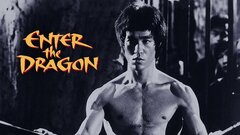
Enter the DragonStream

The Real Bruce Lee
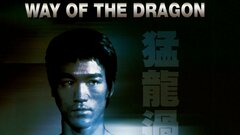
Way of the DragonStream

Way of the DragonStream

Way of the DragonStream

Way of the DragonStream

Fist of FuryStream

Longstreet
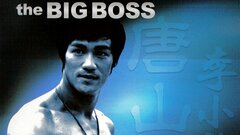
The Big BossStream

Das war Bruce Lee
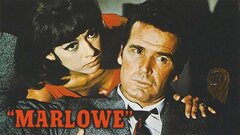
MarloweStream
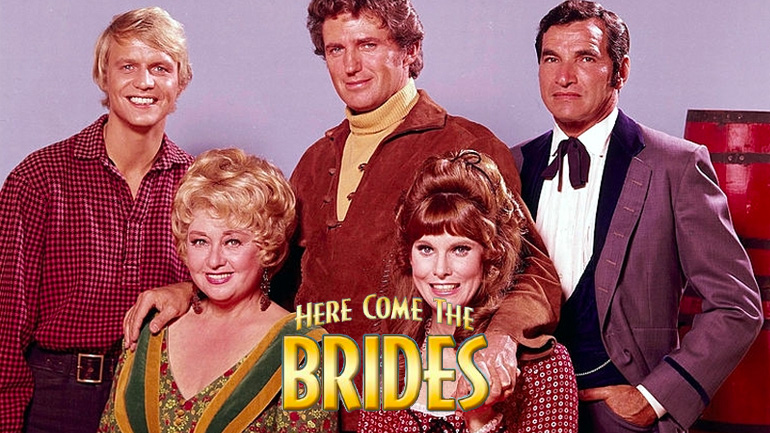
Here Come the Brides

The Green Hornet
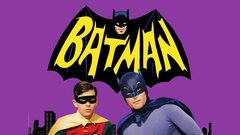
BatmanStream

The Orphan

An Orphan's Tragedy

In the Face of Demolition

The Guiding Light
























































































